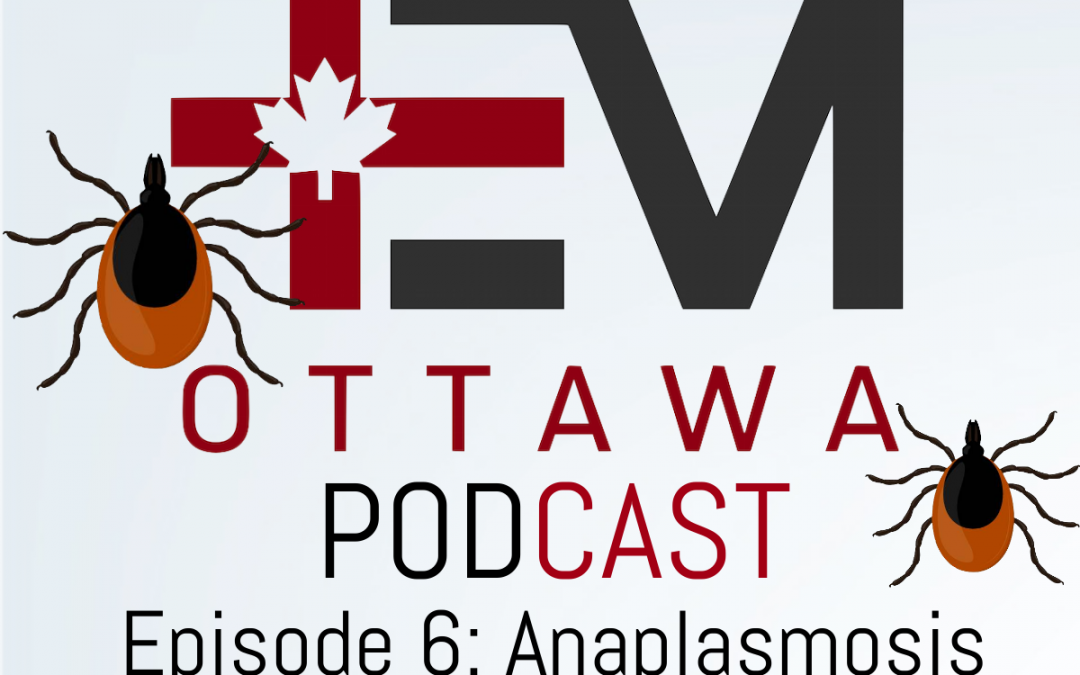
Episode 8: Patient Complaints
On this episode of the EM Ottawa Podcast, Dr. Rajiv Thavanathan talks to Dr. Nicholas Schouela to discuss the patient complaints process, approaches and mitigation strategies.
Why do they matter?
They’re common. They’re associated with shame and distress. We’re generally high achieving people who take perceived failures poorly. Importantly, many are based on legitimate patient safety issues. By addressing this, we can work towards improving patient safety.
What has changed recently in the patient safety landscape?
In Canada, between 2016-2020, there was a 20% increase in college complaints across all specialties. The ED sees the 3rd highest rate of college complaints across all specialties; for reference, the highest being obstetrics & gynecology, and the second being general surgery.
How did Covid-19 influence patient complaints?
Despite decreased patient volumes during the initial phases of the pandemic, complaints continued to rise increasing locally in Ottawa by 22%.
What guidelines or legislation exist for hospitals in managing the complaint process?
All provinces have essentially mandated that patient complaints are taken seriously and in a structured way.
Ontario has the Excellent Care for All Act. This is a piece of legislation that was developed to increase the focus and accountability for delivering high-quality care through the initiation of multiple hospital and government level committees.
What is the CMPA, and what is its role in patient complaints?
The CMPA is a not-for-profit defense association, they provide medical legal advice and assistance, patient compensation, resource for risk management, and they write medical-legal opinions for public policy. For patient complaints, they are there to advise, and if needed provide legal counsel.
What are the steps involved after receiving a patient complaint at the college level?
One of the first steps should involve contacting the CMPA. You should not attempt to access or edit the patient’s chart. Following this, you respond to the complaint with the CMPA’s help. Following your response, the CPSO begins the investigative process; this can take between 3 to 10 months. It then takes 2 to 3 months to formulate a decision; essentially a year-long process.
What are common pitfalls made in responding to patient complaints?
- Opening the patient’s chart without permission. You need permission from your local hospital to do so as the information does not belong to you.
- Trying to edit the note or the encounter. If you alter the patient encounter, your credibility is instantly lost.
- Responding too emotionally or defensively. You want to remain factual and even-toned.
What are the outcomes of complaint decisions?
Split into favorable or unfavorable outcomes. Favorable essentially meaning you were in the right. Unfavorable outcomes include cases that were dismissed with concern, suspensions, restrictions placed on a license, revoking of a license, or voluntary resignation or resignment.
Why do patients complain?
Multiple reasons, although most commonly due to a perceived injustice. A 2018 ED study by the CMPA showed that approximately half of all patient complaints involved scenarios that resulted in patient harm. Of these harm-scenarios, 90% of medical experts were critical of the initial care provided.
Complaints can be divided into three different categories: Clinical care, situational awareness, or a communication breakdown.
What deficiencies were identified by the CMPA as leading to complaints?
The vast majority pertain to inadequate patient assessments. A good proportion also include failure to refer to appropriate consulting services, and inadequate or incomplete investigations.
What are situational awareness complaints?
On average, 1 out of every 5 complaints are based on situational awareness. These include monitoring issues, such as a patient that should have been on a monitor but was placed in an unmonitored area and harm resulted. This further includes tests that were sent off and not followed up on, patients discharged prior to abnormal lab values resulting, or the physician performing an incomplete review of the medical chart leading to suboptimal care.
What is communication breakdown from the CMPA standpoint?
On average, 1 out of every 4 complaints relate to communication breakdown. These can be divided into four broad categories: physician to patient communication, inter-physician, physician to other allied health providers, and documentation.
Is communication modifiable in reducing patient complaints?
Absolutely. Improving communication can also improve your decision making and situational awareness.
What aspects of handover may reduce patient complaints?
Handover is a high-risk time of physician-to-physician communication breakdown. Poor handover increases the risk of patient harm, time in the department, and investigations.
Dr. Ed Kwok, in a 2020 study identified that ¼ of patients were inadequately handed over, with up to ½ of patients consulted inadequately handed over.
Ultimately, the risks associated with missing key information in handover can be minimized by using a standardized framework, such as ED VITALS.
Beyond a standardized handover framework, how can we further improve communication?
Disclosing non-clinically relevant abnormal results. Particularly if patients have access to reviewing their own labs or electronic charts, as this can be distressing to patients. Addressing all incidental findings on imaging, even if it simply means following up with their primary care provider in 6-months to repeat the test.
Tips for disclosing errors
Firstly, certain situations mandate the disclosure of error. This includes any incident that leads directly to patient-harm, or that reached the patient and had the potential for harm, even if it didn’t cause any harm. Generally, it’s a good idea to disclose any incident that reaches the patient even if it didn’t have the potential for harm.
Any pearls or pitfalls for apologizing to patients?
An apology in the form of a statement of regret is both a good idea and can help with emotional healing. This is protected across Canada in different provincial acts as not being considered an admission of fault. For reference, in Ontario, this act is called the Apology Act.
What are the critical elements of discharge instructions that can minimize patient complaints?
This is the final impression you give to a patient and relays critical information. You should include advise specific to their condition, a follow-up plan, the signs and symptoms in which you would want them to seek care again and make it clear that they are always welcome to return. This should be done verbally at a minimum; however, written handouts can be a nice compliment to this.
Where do we go wrong with obtaining and documenting consent in the ED?
Two different categories. The first is forgetting to obtain consent entirely, which can lead to allegations of battery. The second is a consent process that fails to adequately inform them. Recall that consent includes multiple components: it needs to be voluntary, the patient needs to have capacity, they need to be properly informed about the risks, benefits, alternatives, and consequences of declining the procedure.
In the age of electronic charting, what are the medicolegal risks of using pre-filled templates or dot-phrases?
While largely beneficial, they can lead you to documenting things you didn’t do, which can of course harm you medicolegally. There hasn’t been a specific CMPA judgement on this that the authors are aware of.
Any advice to be more empathetic or caring for patients in the emergency department?
Remember that patients present to the ED because they have a worry or concern. Even if they don’t have underlying emergent pathology, they don’t feel well. Using empathy to address these concerns remains paramount. Additionally, use a patient-centered approach with culturally appropriate care.
What practical advice do you have for physicians dealing with patient complaints?
Recognize that these aren’t easy. We will all receive at least one during our career no matter how careful we are. We know that complaints can cause significant emotional distress, anxiety, depression, substance abuse, social withdrawal, work disruptions, insomnia, loss of trust in patients, and feelings of helplessness. Self-care is important: exercise, mindfulness, and seeking out supportive people in your network or professional support. There are provincial medical associations physician help programs. If you work out of a university, there are also university affiliated faculty wellness programs. The CMPA itself also has several resources and guides.
Any practical strategies that can be exercised independently?
Cognitive strategies, such as the best-friend strategy, which involves treating yourself how you would treat your best friend if they came to you in the same scenario. Reflect on maintaining a growth mindsight and consider reviewing your knowledge base if there were any identified areas of deficit. Most importantly, practicing self-care as emphasized above.




